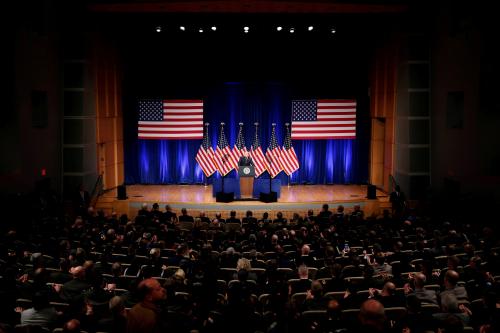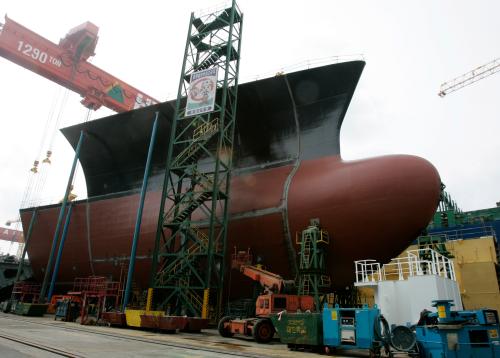The spring of 2011 brought perhaps the single biggest highlight in the war on terrorism since 9/11: the killing of Osama bin Laden in Pakistan. Generally, however, it was a frustrating season in the combat zones, as shown below in data from April 1 to June 30 of 2009, 2010 and 2011.
In Iraq, violence is persistent (if much reduced from five years ago). The coalition government — which took almost a year to form — is locked in a standoff between Prime Minister Nuri Kamal al-Maliki and Ayad Allawi of the main opposition party. They have failed even to agree on leaders for the Defense and Interior Ministries. Violence, stalemate and Iranian instigation have increased sectarian tensions and the potential for renewed warfare. Meanwhile, the remaining American troops are to withdraw by this fall, unless Iraqi leaders say otherwise. Such a complete American departure is bound to be highly fraught.
Pakistanis are more anti-American now than at any point since 9/11. There has been little headway this year in addressing the country’s own extremist elements or the Afghan insurgents who have found sanctuary on Pakistani soil. Economic growth remains painfully slow. Indeed, the global recession — sparked by the American financial crisis — has caused more harm there in recent years than American aid has done good.
In Afghanistan, things are looking somewhat better, as a new ambassador, Ryan C. Crocker, and top commander, Gen. John R. Allen, move into their roles. Afghans are responsible for the security of Kabul and make up about half of coalition forces in major operations. The surge has been validated by progress in the south — where health clinics are open, poppy production is down, school enrollment up and officials can travel by road (rather than by NATO helicopter). Yet violence remains frequent, corruption endemic, relations with President Hamid Karzai tense and politics frozen over a dispute about last fall’s parliamentary election. And the Obama administration has ordered one-third of American troops to withdraw by next fall, sooner than commanders had expected.
| Spring 2009 | Spring 2010 | Spring 2011 |
|
| Iraq | |||
| Civilian Deaths From War | 900 | 700 | 380 |
| U.S. Troops in Iraq | 134,000 | 92,000 | 46,000 |
| U.S. Troop Deaths | 59 | 22 | 28 |
| Iraqi Security Forces | 645,000 | 666,000 | 670,000 |
| Iraqi Security Force Deaths | 135 | 118 | 159 |
| Oil Production (in millions of barrels/day; prewar: 2.5) | 2.4 | 2.4 | 2.5 |
| Electricity Production (in megawatts; prewar: 4,000) | 6,000 | 5,600 | 6,400 |
| Citizens Happy with Iraq’s direction (percent) | 51 | 41 | 38 |
| Pakistan | |||
| Civilian Deaths from War | 1,000 | 750 | 750 |
| Pakistani Forces Deployed to North and West of Country | 147,000 | 100,000 | 147,000 |
| U.S. Drone Strikes | 13 | 19 | 21 |
| Pakistani Army Deaths Battling Insurgents (annualized) | 1,185 | 640 | 1,050 |
| Competitiveness Rating (of business climate; out of total countries rated; by the World Economic Forum) | 101/134 | 101/133 | 123/139 |
| G.D.P. Growth Rate (percent) | 2.0 | 3.0 | 4.0 |
| Inflation Rate (percent) | 20.8 | 11.7 | 16.0 |
| U.S. Aid (in billions of dollars) | 3.0 | 4.5 | 2.5 |
| Citizens with a Favorable View of U.S.(percent) | 16 | 17 | 12 |
| Citizens Unhappy with Pakistan’s Direction (percent) | 89 | 84 | 92 |
| Afghanistan | |||
| Civilian Deaths from War | 640 | 700 | 850 |
| U.S. Troops in Afghanistan | 50,000 | 88,000 | 99,000 |
| Other Foreign Forces | 32,000 | 40,000 | 42,000 |
| U.S./Other Foreign Troop Deaths | 43/36 | 114/74 | 128/44 |
| Afghan Security Forces | 165,000 | 225,000 | 295,000 |
| Afghan Security Force Deaths | 235 | 335 | 350 |
| G.D.P. Growth Rate (percent) | 20.4 | 8.2 | 8.0 |
| Children in School (in millions) | 6.3 | 7.0 | 8.2 |
| Key | More Favorable | Favorable | Less Favorable |
The Brookings Institution is committed to quality, independence, and impact.
We are supported by a diverse array of funders. In line with our values and policies, each Brookings publication represents the sole views of its author(s).



Commentary
Op-edStates Of Conflict: An Update
July 29, 2011